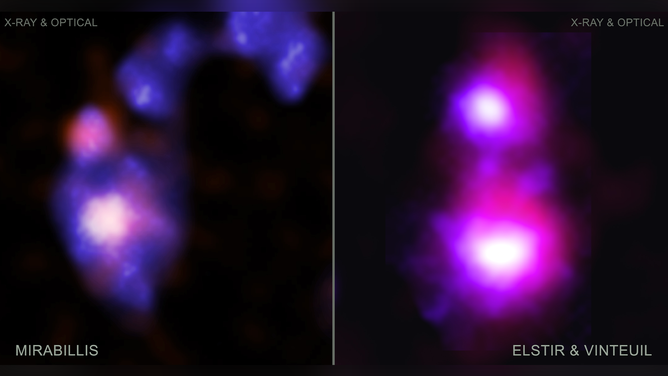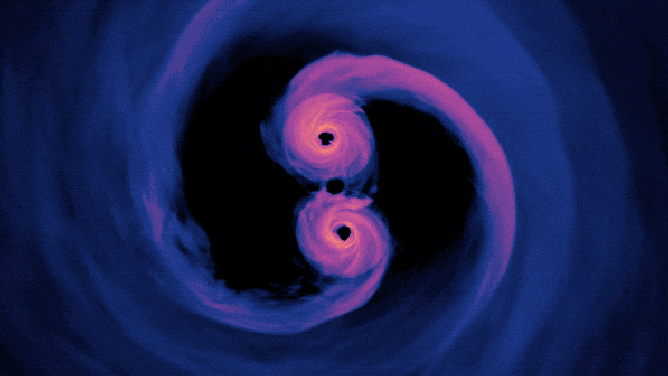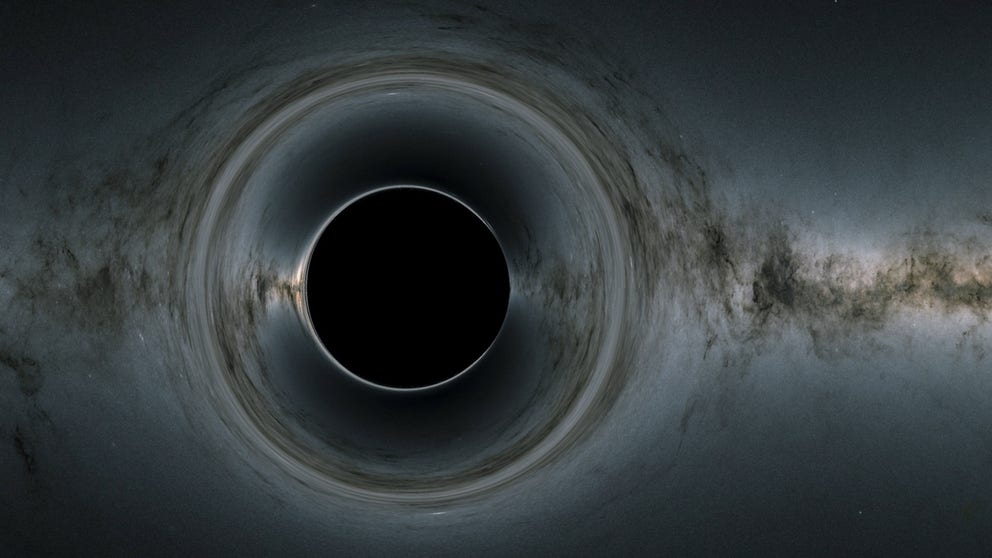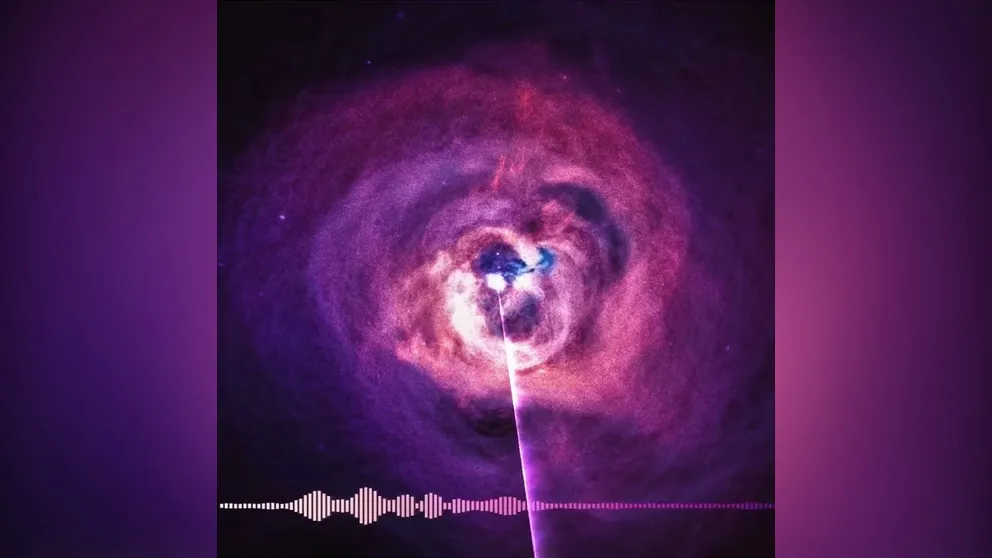Images show giant black holes on a cosmic collision course in dwarf galaxies far, far away
NASA said astronomers have long suspected dwarf galaxies merging before have grown into the larger galaxies seen today, but no current technology can observe previous mergers because they can barely be seen due to their great distances from Earth.
What is a black hole? Explaining the universe's most mysterious cosmic object
Much studied but not fully understood, black holes are among the most mysterious cosmic objects in our universe.
Astronomers said NASA’s Chandra X-ray Observatory has, for the first time, discovered evidence of giant black holes on a collision course in faraway dwarf galaxies.
According to NASA, dwarf galaxies contain stars with a total mass of fewer than 3 billion suns or about 20 times less than the Milky Way.
NASA said astronomers have long suspected dwarf galaxies merging before have grown into the larger galaxies seen today, but no current technology can observe previous mergers because they can barely be seen due to their great distances from Earth.
NASA unveils sound waves from black hole
NASA releases audio of a black hole at the center of a Perseus galaxy cluster.
NASA said the new study, the findings of which are being published in the Astrophysical Journal, overcame the challenges by using the Chandra X-ray observations and comparing them with infrared data from NASA’s Wide Infrared Survey Explorer (WISE) and data from the Canada-France-Hawaii Telescope (CFHT).
The material surrounding black holes can be heated up to millions of degrees, producing many x-rays, NASA said. So, astronomers began searching for pairs of bright x-rays in colliding dwarf galaxies as evidence of present black holes and found two examples.
STELLAR SNACK: HOW A BLACK HOLE EATS A DOOMED STAR FOR BREAKFAST

Scientists have discovered black holes that are on a collision course in far away dwarf galaxies.
(X-ray: NASA/CXC/Univ. of Alabama/M. Micic et al.; Optical: International Gemini Observatory/NOIRLab/NSF/AURA / NASA)
NASA said one pair of black holes was found in the galaxy cluster Abell 133, located 760 million light-years away from Earth. There a pair of dwarf galaxies appear to be in the final stages of a merger, which has been nicknamed Mirabilis by the study’s authors. In the image above, Chandra's X-ray data is pink, and the optical data from CFHT is blue.
The other pair of black holes was discovered in Abell 1758S, a galaxy cluster about 3.2 billion light-years from Earth. On the right side of the image above, Chandra X-ray data is also in pink and optical data from CFHT is in blue. The researchers nicknamed the merging dwarf galaxies Elstir (bottom) and Vinteuil (top), after fictional artists from Marcel Proust's "In Search of Lost Time."
NASA said the researchers believe the images show the two have been caught at the start of a merger, causing stars and gas to connect due to the gravitational pull between the two.
HOW THE TELESCOPE BECAME OUR WINDOW INTO THE UNIVERSE

Gas glows brightly in this computer simulation of supermassive black holes only 40 orbits from merging. Models like this may eventually help scientists pinpoint real examples of these powerful binary systems.
(NASA’s Goddard Space Flight Center / Scott Noble / NASA)
The merging of the black holes and dwarf galaxies may now provide insight into the Milky Way’s past, according to NASA.
Scientists think that most galaxies began as dwarf or other small galaxies and continued to grow throughout billions of years due to mergers.

